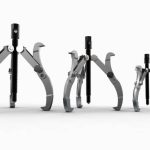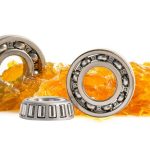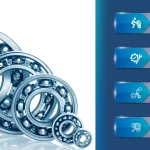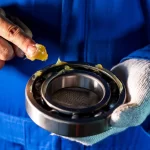Bearings are a crucial part of machinery and failure can cause a significant impact on the overall functioning of machinery. In order to help you ensure the proper functioning of bearing, this blog discusses various aspects of common causes of bearing failure and ways to avoid them.
The bearings offer a lifeline to various equipment and machinery across a wide range of industrial sectors. From a two-wheeler to an aero plane, bearings are used everywhere to support machinery and its operations. They are the small pieces of big machinery that handles load and weight while powering mechanical systems to ensure smooth operations. While every piece of equipment comes with the specified life, this same applies to bearings as well. It depends on multiple conditions on how a bearing fails as it may not be just limited to usual conditions like- wear and tear or corrosion. This blog discusses various causes of bearing failure and tips on how you can avoid it.
Bearing Failure Can Cause Machinery to Break Down
The lack of maintenance of the bearing can result in machinery breakdown which can further impact the functioning of the overall system. This doesn’t only cause an effect on bearing but can also damage machinery in varied ways.
Common Causes Of Bearing Failure & Solutions
The Bearings also do come with service life and there are varied reasons why a bearing can fail.
Here are the different causes of bearing failure and its solutions:
- Lubrication: The lubrication needs to be applied in a balanced way. If machinery or bearings have been applied with improper lubrication such that- over greasing, under greasing, etc. It may cause various problems and break down the bearing. The only solution to tackle this is to use lubrication in moderation and also ensure the type of grease quality used in it.
- Working Conditions of Bearings: It is also taken into consideration which environment the bearing is exposed to. If it is exposed to water, dust, sand, etc. it can lead to corrosion or erosion of the bearing surface leading to premature failure. In order to protect bearings from such conditions, it is always recommended to check the usage conditions and suitable conditions where bearings can work efficiently.
- Bearing Fatigue: The overhauling of the bearing can lead to its failure which can happen due to over-utilization. In such conditions, it fractures the surface of bearings and results in breakdown. The solution to ensure bearing fatigue is to perform scheduled maintenance on a regular basis so as to check for the scope of replacement.
- Misalignment and Shifting of Bearings: The bearings are very small pieces that are attached to machinery or equipment to make them work. There are possibilities that due to overuse or various other conditions, the bearing can get misaligned from its ideal position making it break down.
- Installation Errors: Installation errors are quite common as they may lead the bearing to get damaged before its service life. It is always important to ensure and verify that the right kinds of tools are used to install the bearings.
Avoiding Bearing Failures
Bearing Failures can incur costs in varied ways as they can also affect the operational efficiency of machinery and equipment. The best way to avoid bearing failures is to perform regular maintenance, do regular greasing or lubrication based on bearing manufacturer guidelines, and check for any faults or misbehavior. Another aspect to ensure bearing failure doesn’t happen is to install bearings properly with the right kind of tools while taking care of proper fixation and alignment. The bearing maintenance should be a primitive part of the process which helps you save the cost of repairing or replacing the bearing by performing preventive maintenance.
Running Diagnostic Tests to Ensure Smooth Operations
There are various ways through which you can perform predictive checks to ensure that bearings are working as per their defined efficiency. Diagnostic Tests like Root Cause Failure analysis can track any potential failures or wear/tear conditions to ensure that the bearings are in proper shape. Apart from it, IR-based thermography can also be run to conclude temperature-related conditions. These tests are crucial to ensure that the bearings don’t run out before the time.



















